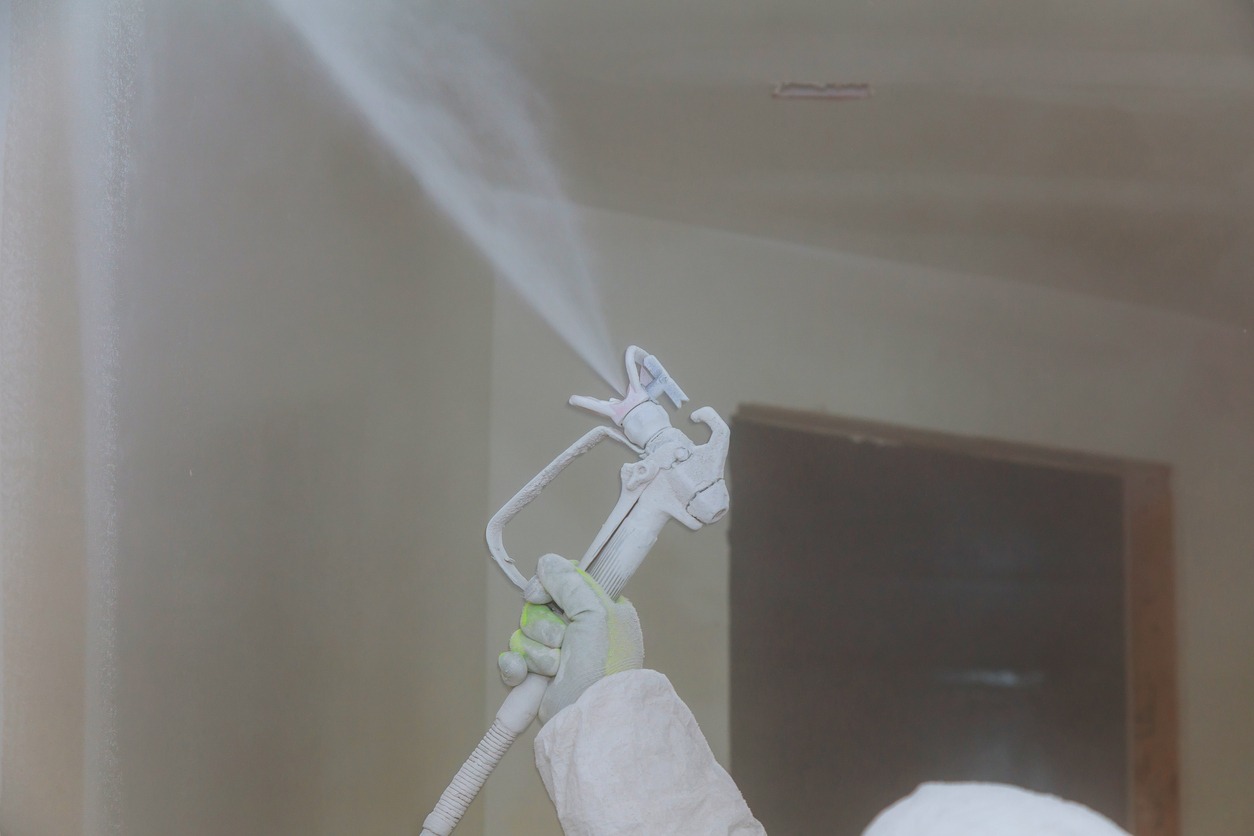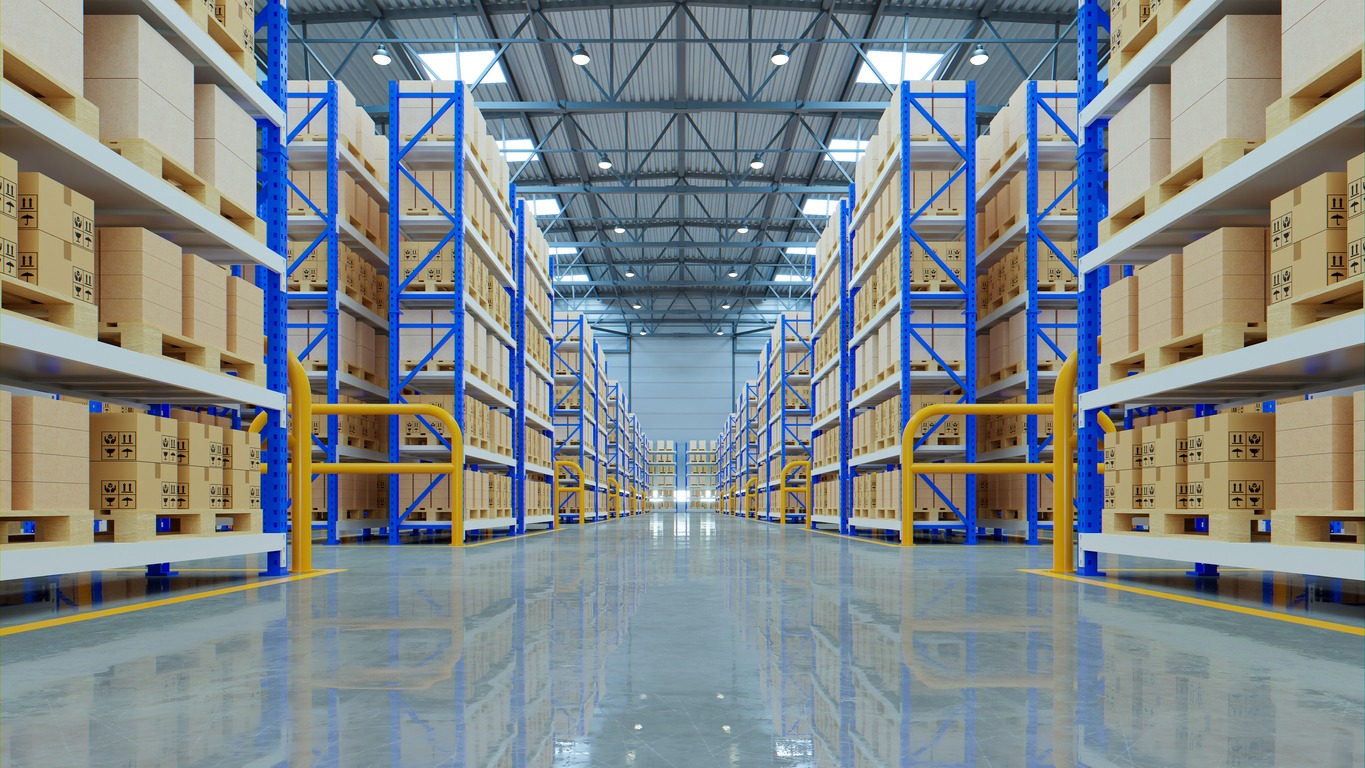Warehouse painting is crucial in maintenance, aesthetics, safety, and longevity. By protecting surfaces from wear, corrosion, and environmental damage, a durable paint job extends the facility’s lifespan, reduces maintenance costs, and enhances the overall appearance. Additionally, the strategic use of color and markings improves safety by clearly designating pathways, storage zones, and hazard areas, making it easier for employees to navigate.
However, painting massive industrial spaces like warehouses presents unique challenges not encountered in smaller buildings or residential properties. Warehouses require durable materials, specific safety measures, and specialized techniques to handle expansive surface areas, high ceilings, heavy foot traffic, and the need for quick turnaround to minimize operational downtime.
Why warehouse painting matters
Warehouse painting is crucial for maintaining a functional, safe, and appealing environment.
- Protection against elements: Warehouses are exposed to moisture, temperature changes, and other environmental factors that can lead to corrosion and surface wear. Applying high-quality paint creates a protective barrier that prevents rust, moisture damage, and general deterioration, extending the building’s lifespan.
- Enhanced safety: Painting can improve safety by marking different zones with high-visibility paint to outline pathways, hazard zones, and areas for specific equipment. These visual markers are essential in helping employees navigate the space safely and reducing accidents.
- Branding and aesthetics: A warehouse’s appearance can reflect the company’s image. A well-painted, orderly warehouse looks professional, aligns with the company’s branding, and can boost morale while making a positive impression on clients and visitors.
Key considerations before starting
Before painting a warehouse, consider these key factors:
Type of paint
Selecting the correct type of paint is essential for durability and performance in an industrial environment.
- Epoxy paints are highly durable, resist chemicals, and are excellent for areas with heavy traffic but require careful application.
- Acrylic paints, while easier to apply and quick to dry, generally lack the long-term durability of epoxy.
- Other industrial-grade paints, like polyurethanes, offer UV resistance, making them suitable for outdoor areas. Choose paint based on the warehouse’s specific needs for durability, resistance to wear, and maintenance requirements.
Surface preparation
Proper surface prep is crucial for paint adhesion and longevity. Cleaning removes oils, dirt, and other contaminants, while patching fills cracks and surface damage.
Priming the surface creates a smooth, adhesive layer for the paint, reducing peeling and flaking over time. This preparation is even more critical in warehouses, as unclean or unprimed surfaces can lead to early paint failure.
Regulatory compliance
Warehouses often need to meet environmental and safety standards for VOC emissions, which vary by location and can influence paint choice. Some facilities may also have fire safety or chemical resistance requirements, so selecting a paint compliant with local and industry-specific regulations is essential.
Temperature and humidity
These factors significantly impact paint drying and curing times, especially in large, open spaces like warehouses. High humidity can slow drying and may affect adhesion, while very low temperatures can prevent proper curing, particularly for epoxy paints. Plan the painting schedule according to seasonal and daily weather patterns, maintaining optimal conditions for a professional, long-lasting finish.
The painting process
Here’s an overview of the warehouse painting process:
1. Step-by-step overview
- Planning: Assess the warehouse space, plan the color scheme, and schedule painting to minimize disruption.
- Cleaning: Prepare the surfaces by thoroughly cleaning and removing any debris, dust, or old paint to ensure adhesion.
- Priming: Apply a primer to the walls and floors to promote paint adherence and longevity.
- Painting: Use durable, high-quality paint suited for industrial environments. Typically, multiple coats are applied for a long-lasting finish.
- Inspection: Once the painting is complete, inspect for uniformity, coverage, and any touch-ups needed.
2. Special equipment and techniques
- Use airless sprayers to cover large surfaces quickly and evenly, reducing time and labor.
- High-access platforms (like scissor lifts or cherry pickers) allow painters to reach elevated areas safely.
- Industrial-grade brushes and rollers are often used for areas requiring precision, such as corners or edges.
3. Safety protocols
- Ensuring worker safety is paramount; PPE (personal protective equipment) like masks, gloves, and safety goggles is essential.
- Traffic management and clearing the area are critical to prevent accidents, especially in active warehouse settings.
- Proper ventilation and hazard communication (posting signs and barriers) help protect workers and other personnel from fumes or hazards during painting.
Choosing the right contractor
When choosing a contractor for warehouse painting, look for the following criteria:
Experience in industrial spaces
Contractors with a background in large-scale projects understand the unique demands of warehouse environments, such as high ceilings, expansive surfaces, and specific safety protocols.
Understanding of industrial coatings
Ensure the contractor is well-versed in industrial coatings. These spaces require durable, specialized coatings to withstand heavy traffic, machinery, and environmental factors. A knowledgeable contractor will recommend the appropriate coatings, such as epoxy or polyurethane, to provide a long-lasting, protective finish.
Insurance and licensing
Prioritize contractors who are insured and licensed. Insurance safeguards against accidental damages or injuries on-site, while licensing ensures they meet the regulatory standards necessary for commercial spaces. This combination of expertise and reliability will help secure a professional and durable result for your warehouse.
Maintenance and repainting
Routine maintenance tips
Regular maintenance can keep warehouse paint looking fresh and protective for longer. Dust and dirt should be routinely removed with soft brooms or mild soap and water, especially in high-traffic areas. Address minor chips or scratches with touch-up paint to prevent further damage. For painted floors or marked areas, a quick sweep and occasional damp mop are sufficient, but non-slip surfaces may require specialized cleaning products to retain their texture.
When to repaint
Watch for signs like peeling or flaking paint, which often indicates worn-out protection, especially in areas subject to frequent impact or exposure to harsh elements. Discoloration or fading also suggests it’s time for a repaint, as it can reduce the visibility of safety markings or diminish the warehouse’s appearance. New environmental conditions—such as increased humidity or temperature changes—may also call for a fresh coat of durable, industrial-grade paint to ensure optimal protection.
Parting words
Investing in high-quality paint and professional expertise benefits warehouse painting. These benefits include protection against the elements, enhanced safety, branding, and aesthetics. These benefits result in a professional-looking appearance and preserved structural integrity for your warehouse.
A well-maintained warehouse painting enhances operational efficiency and ensures employee safety. Regular upkeep, from proper floor striping to effective lighting and organization, contributes to smoother workflows and reduces the risk of accidents.
If you want to optimize your warehouse environment, consult with our Custom Painting, Inc. experts to discuss how we can help elevate your space. Call us at 925-294-8062 or message us on our contact page for a free job quote.



